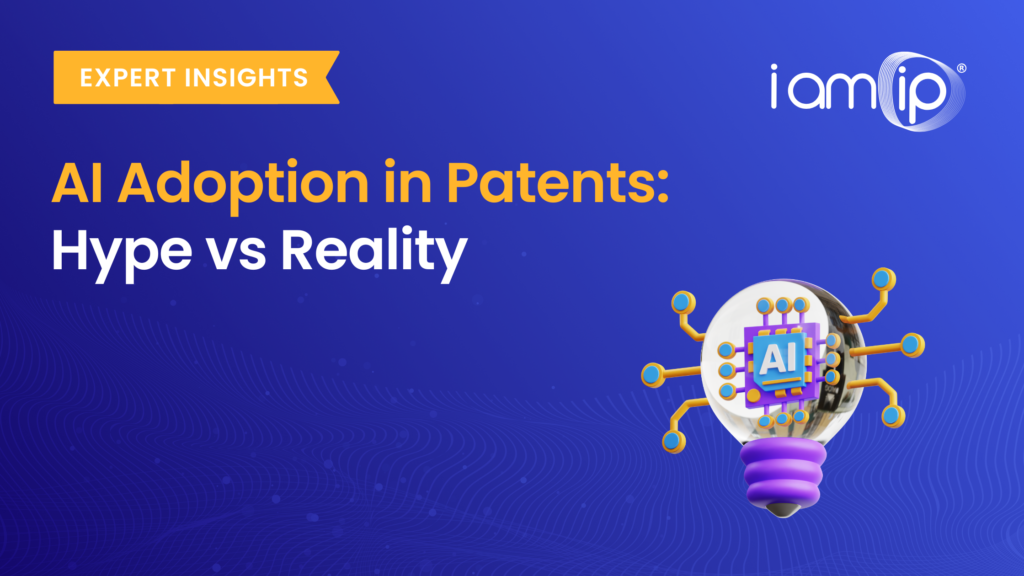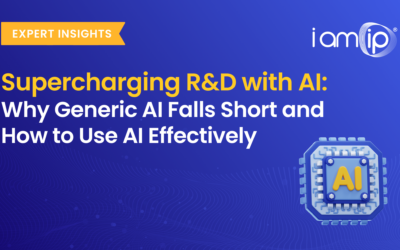
The arrival of Artificial Intelligence has admittedly created a frenzy and businesses across all industries are feeling the pressure to adopt it and make it part of their daily operations. AI has the potential to change the way we work, by automating a lot of manual processing and improving decision-making. However, many companies are in a hurry to implement AI in their workflows without having fully grasped what it could mean for their operations and the impact it might have. This can result in unrealistic expectations, and, ultimately, disappointment.
AI can be a useful and powerful tool, but its adoption should be planned and strategic. The crucial question is this: Are we implementing AI to make real progress, or simply to follow the trend?
In this blog, we’ll cover the most common risk factors of the AI adoption, the difficulties of aligning expectations with reality and the strategic ways in which businesses should approach AI to make sure they get tangible results that will benefit them in the long run.
The AI Adoption Frenzy
No one can deny the hype around AI and its implementation. Companies don’t want to stay behind as they see more and more of their competitors investing in AI-based tools. The fear of missing out (FOMO) plays a significant role in how companies approach AI adoption. As a result, there is a rush to implement AI features as soon as possible, sometimes without a clear strategy or use case.
The problem is that there’s no one-size-fits-all approach to AI. Every team, business model and industry are different which means that they need a different strategy for implementing AI. Simply adding AI into a workflow without understanding how it fits into the broader company strategy probably won’t end up having the desired results and will cause frustration.
In the patent industry for example, AI is often introduced as a way to accelerate searches, automate processes, analyze large databases and improve decision-making. If businesses, however, implement AI tools without considering how their teams will use the tools and the results they’ll get from them, then they risk investing in technology that doesn’t meet their real needs.
The Gap Between Expectations and Reality
A common error made when adopting AI is setting unrealistic standards. Businesses expect that AI will work flawlessly from day one, taking the place of human expertise and immediately solving complicated issues. AI is not magic, though. It needs to be trained, which means it requires time to learn, fine-tune and integrate into current processes.
Some key areas where expectations and reality often diverge include:
- AI as a Human Replacement vs. AI as a Support Tool
Many companies believe that AI will soon replace human expertise by automating every aspect of a workflow. In reality, AI works best when it’s combined with human knowledge. For example, in the patent industry, AI can quickly scan and categorize patent documents from a large dataset, but human interpretation is still crucial to understand the strategic implications of the findings.
- Instant Accuracy vs Continuous Learning
AI models don’t instantly start at 100% accuracy. They need to be continuously trained and improved with user input. If organizations anticipate AI to deliver flawless results from the get-go, then they will most likely be disappointed when initial iterations fall short of their expectations.
- Effortless Integration vs. Organizational Change
AI adoption often needs a change in the way a team works and, in their dynamics, and goes beyond just a simple software upgrade. For AI to deliver the best possible results, new processes, training, and adjustments are required. Companies who don’t that that a need for change management is important, may struggle to see a return on investment.
The Risks of Implementing AI Without Strategy
Rushing into AI implementation without a clear plan can create a number of problems:
Misalignment with Business Goals: AI solutions should have a clear purpose. If a company adopts AI only because it’s popular, they may end up spending money on tools that won’t solve their current problems.
Wasted Resources: AI implementation requires time, money, and effort. Without a strategy and a well-thought-out plan, businesses risk investing in technology that doesn’t provide value.
Resistance from Teams: If employees think that AI will replace them, or if they don’t understand its purpose, they might oppose its implementation. A lack of proper training and communication can also lead to them not utilizing the tool in a correct and effective way.
To avoid these pitfalls, businesses need to focus on why they are adopting AI and how it will provide tangible benefits.
A Smarter Approach to AI Adoption
Rather than rushing into AI adoption, organizations should take a structured and intentional approach:
1. Define the Problem AI Needs to Solve
Instead of implementing AI for the sake of innovation, businesses should start by identifying specific pain points. Is the goal to improve efficiency? Reduce manual errors? Gain deeper insights from data? AI should address a concrete need, not just serve as a buzzword.
2. Start Small and Scale Gradually
AI implementation doesn’t have to be an all-or-nothing approach. Companies can begin with a pilot project, test its effectiveness, gather feedback, and refine the process before scaling up. This minimizes risk and ensures AI solutions align with real-world business needs.
3. Invest in Training and Change Management
AI is most effective when teams know how to use it. Businesses should provide training, set realistic expectations, and involve employees in the adoption process. AI should be seen as a tool that enhances human work rather than replacing it.
4. Measure Success Beyond the Hype
AI adoption should be evaluated based on meaningful outcomes, such as improved decision-making, time savings, or increased accuracy. Companies should establish key performance indicators (KPIs) to measure AI’s impact and adjust strategies accordingly.
Conclusion: AI Should Be a Tool, Not Just a Trend
AI has the potential to transform industries, but its success depends on thoughtful implementation. Companies that rush into AI adoption without clear objectives or realistic expectations often find themselves frustrated with the results.
Instead of chasing the AI trend, organizations should focus on strategic adoption—using AI to solve real problems, support human expertise, and drive meaningful progress.
The key takeaway? AI should be a tool that adds value, not just a checkbox on a digital transformation roadmap. Businesses that approach AI with purpose will see lasting benefits, while those who follow the hype risk disappointment.
insights by: Dimitris Giannoccaro
Search
Categories
- Announcement 6
- Case Study 1
- Expert Insights 7
- IamIP News 4
- Industry Trends 27
- Innovation Index 4
- New Release 9
- Platform News 2
- Press Release 1
- Webinar 13









